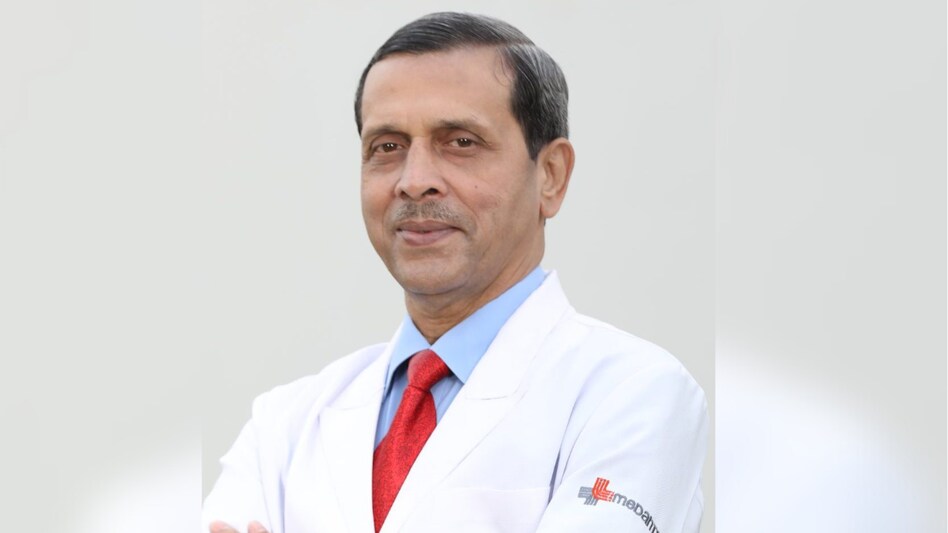 Dr Arvind Kumar of Medanta Gurgaon talks to BT about the challenges in India from the availability of organs, to manpower, and the high cost of the treatment
Dr Arvind Kumar of Medanta Gurgaon talks to BT about the challenges in India from the availability of organs, to manpower, and the high cost of the treatment Dr Arvind Kumar of Medanta Gurgaon talks to BT about the challenges in India from the availability of organs, to manpower, and the high cost of the treatment
Dr Arvind Kumar of Medanta Gurgaon talks to BT about the challenges in India from the availability of organs, to manpower, and the high cost of the treatmentThough the need for lung transplants is increasing in India, especially after the Covid-19 pandemic, the country lacks a centralised registry to track patients in need. Dr Arvind Kumar, Chairman, Institute of Chest Surgery - Chest Onco Surgery and Lung Transplantation, Medanta Gurgaon, in an interview with BT spoke about the current state of lung transplantation in India, its success rate, and challenges and opportunities in the segment. Edited excerpts:
BT: What is the market size of lung transplants in India? What is the cost of a transplant and the number of transplants that are done in a year?
AK: In India, there is currently no official registry to track patients in need of transplants or those who have undergone this procedure. The prevalence of various diseases and the impact of Covid-19 have contributed significantly to this growing pool of individuals with permanent lung damage, leading them to require lung transplants as their only viable option.
Moreover, many individuals in our society may not be listed for transplantation due to various reasons. Unfortunately, there is also no centralised registry that records all the cases of lung transplants performed nationwide. Currently, the total number of lung transplants performed annually in India, across the 4–5 centres offering this procedure, amounts to approximately 100-120 cases per year.
Addressing this rising demand is essential to ensure patients receive timely and appropriate care. Establishing a comprehensive registry to monitor and match patients with suitable donors could significantly improve the situation. By doing so, we can provide better support and hope for those facing respiratory challenges and enhance the overall transplant healthcare system in India.
BT: What is the success rate in India, and how common is it as a treatment?
AK: About 100-120 transplants are performed in the country each year, but there is a significant need for a much higher number of cases. Unfortunately, many people are losing their lives due to the unavailability of suitable donor lungs. Increasing the availability of donor lungs would allow more people to benefit from this life-saving option. The surgical success rate stands at approximately 95%, with around 90% of transplant recipients expected to be alive at the 1-year mark and approximately 65-70% projected to still be alive after 5 years.
BT: Is the need for a transplant more for certain age groups?
AK: We have lung transplant recipients from all age groups, ranging from early childhood to as late as 70 years old. Different lung diseases affect various age spectrums, with some being more common in older patients and others in younger patients. However, certain conditions can affect individuals of all ages. As of today, most centres are in their early stages and typically accept adult patients aged 18 years and above, up to 65 years old. There are centres around the world with extensive experience in lung transplantation, and they may consider recipients up to the age of 70 years. Nonetheless, the usual age range for recipients falls between 18 to 65 years.
BT: What are the challenges and opportunities in the segment for hospitals?
AK: Lungs are invaluable organs, capable of granting the gift of life through organ donation. Raising awareness about organ donation can have a profound positive impact on numerous lives. However, the scarcity of donor organs poses a significant challenge as the demand from recipients surpasses the available supply. Furthermore, lung transplantation is a highly complex procedure, demanding skilled manpower and robust support systems in specialised centres. The cost of lung transplants, primarily offered in private facilities, presents a considerable obstacle, with an average procedure costing about Rs 30-35 lakh, rendering it unaffordable for many individuals. The financial strain is further compounded by the necessity of long-term medication. These challenges encompass organ, manpower, and centre shortages, and necessitate the improvement of survival rates post-transplantation. Vital efforts to address these challenges and enhance the quality of life for transplant recipients rely on increased collaboration and support for organ donation, benefiting those in need.
BT: How has this field evolved in India?
AK: In terms of technique and technology, India is on par with any western country, possessing advanced medical expertise and cutting-edge equipment comparable to the best centres worldwide. However, one challenge India faces is the number of organ donations. Countries like Europe, the US, Canada, and Australia have higher donation rates compared to their population, and this is an aspect that still needs improvement in India.